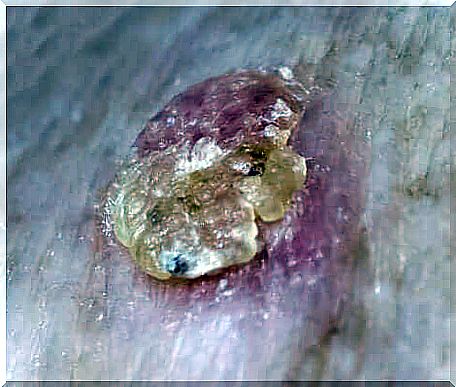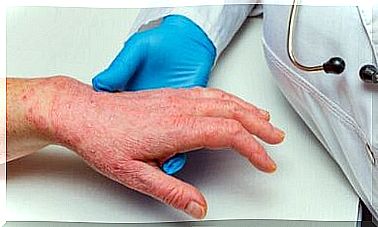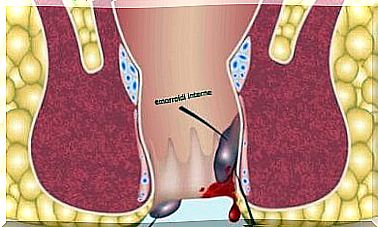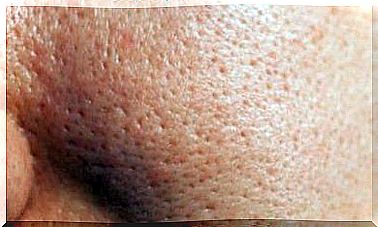Skin Spots: Causes, Types And Treatment

There are different types of skin spots that tend to become more evident over time. They differ in size, color and thickness. Likewise, they are affected by various factors.
They are caused by various elements that act on melanocytes, for example certain drugs, hormonal imbalances or excessive exposure to the sun. Melanocytes are the cells responsible for the formation of spots on the face and body. Let’s see the possible causes, the different types and treatments.
Most common skin spots
Not all spots are the result of excessive sun exposure or age. Some are the manifestation of skin diseases that require specific treatment.
Solar keratosis

They are precancerous formations with a slow and constant development. They arise in areas of the skin that have been exposed to the sun for a long time.
They first appear after age 40 on the auricles, scalp and face. They have a scaly appearance, are rough to the touch and thick; they can be reddish, brown or pink in color. They are often confused with common warts, which delays their diagnosis.
Solar lentigo
Also known as age spots, they are benign formations that affect sun-exposed areas of the skin.
They are hyperpigmented, brown spots that focus on the face, forearms, back of the hands and upper torso. An article published in the American Physician journal indicates that their differential diagnosis is made with freckles, lentigo maligna and seborrheic keratosis.
It is not an injury that requires treatment; its appearance simply indicates that a photodamage has occurred. Generally it is an aesthetic problem.
Pityriasis alba
Pityriasis alba is common in children. It is an asymptomatic dermatosis with a chronic course. The spots show a slight peeling and are hypochromic.
They mostly appear on the face, especially on the mouth and cheeks. They tend to occur on areas exposed to sunlight and on the outside of the forearms. This is not a serious condition, but a very common one ; it does not require treatment. The lesions can take months to disappear spontaneously.
Ephelids
Also called freckles, they are small brownish spots with no thickness. They appear on the areas of the body most exposed to the sun’s rays; they are also typical of fair skin with blond or red hair, with a dominant inheritance.
They arise as a protective reaction against ultraviolet rays, which is why they intensify during the summer season. To prevent them, it is advisable to apply adequate sun protection, regardless of the season.
Vitiligo

Vitiligo is a degenerative disease that causes the complete disappearance of skin pigmentation. It occurs in the form of well-defined whitish spots, on periorificial areas such as the contour of the lips and eyes, but also on the hands and legs.
As there is no cure yet, current treatments aim to arrest its course and achieve re-pigmentation. The aim is to repair the morphological and functional deficiencies in the depigmented skin areas.
According to an article published in the American Journal of Clinical Dermatology , the most effective treatments are narrow-band ultraviolet therapy, the combination of corticosteroid ointment and UVA therapy, and autologous pigment cell transplantation in various modalities.
Melasma, one of the most frequent skin spots
Melasma is one of the most frequent facial spots and is characterized by the appearance of hyperpigmented spots. It is more common in women over 25, and affects areas of the skin that are exposed to the sun, particularly the face.
It tends to occur more frequently with contraceptive pills, during menopause and pregnancy. Available treatments range from depigmenting ointments to various laser therapies.
In the

Moles, or nevi, are flat or raised formations containing melanin. The pigmentation, which varies according to the amount of pigment contained, ranges from black to brown. They usually appear over the years, but they can also have congenital origin.
The ideal would be to undergo dermatological control every year, as some moles can change into malignant neoplasms.
The importance of dermatological control in case of skin spots
Whatever the nature of the stain on the face or body, it would be good to consult the dermatologist to get a precise diagnosis. After determining the cause, the specialist will decide on the most appropriate treatment.
At the same time, moisturizing the skin, applying sunscreen every day, and other care can help keep skin healthy and beautiful.









